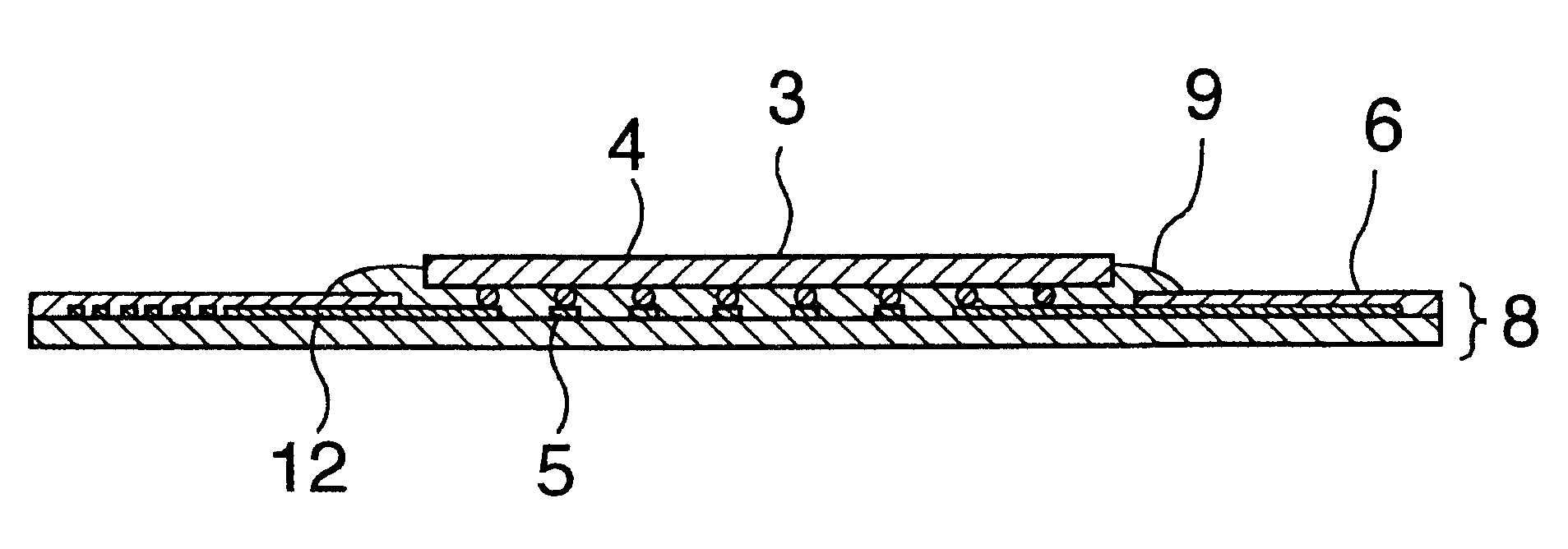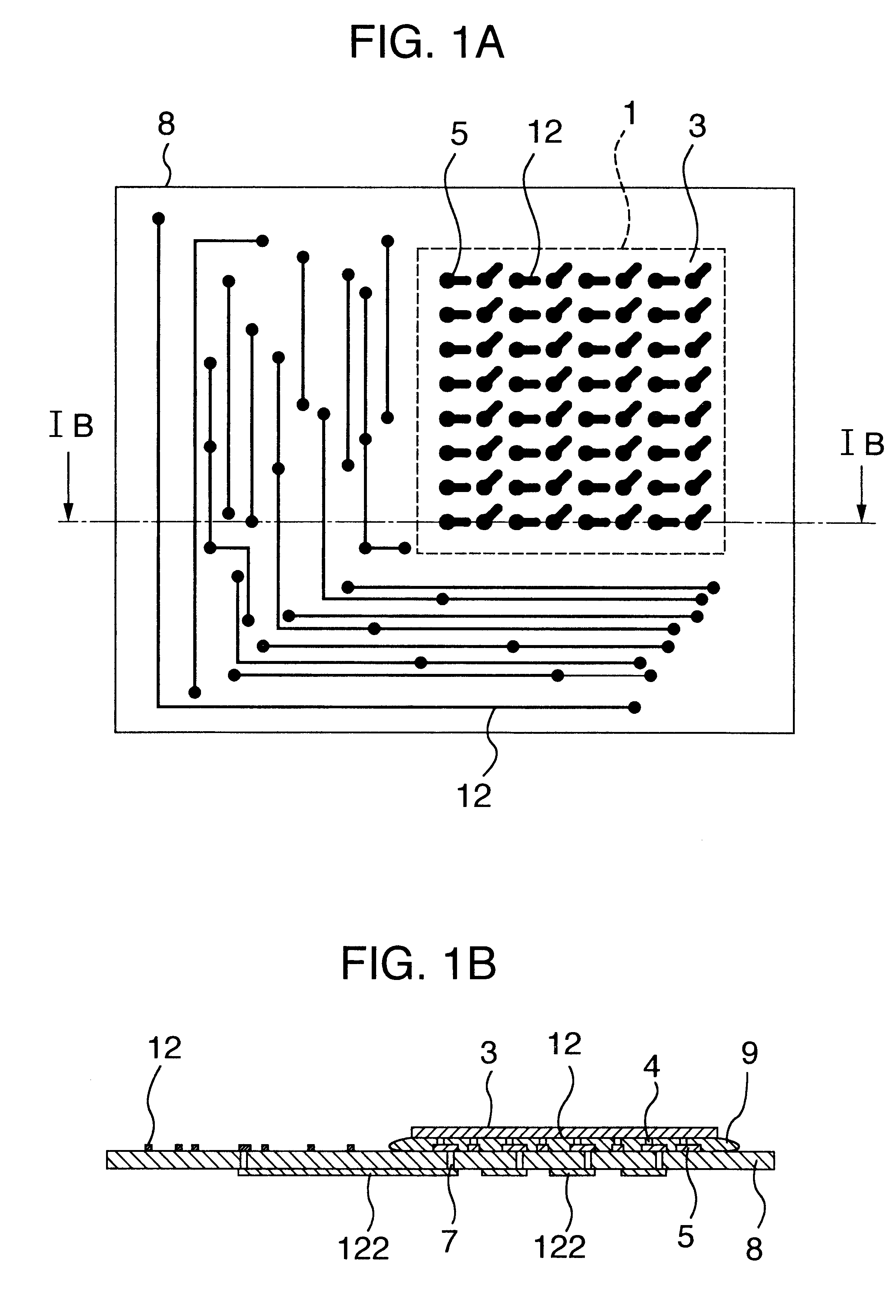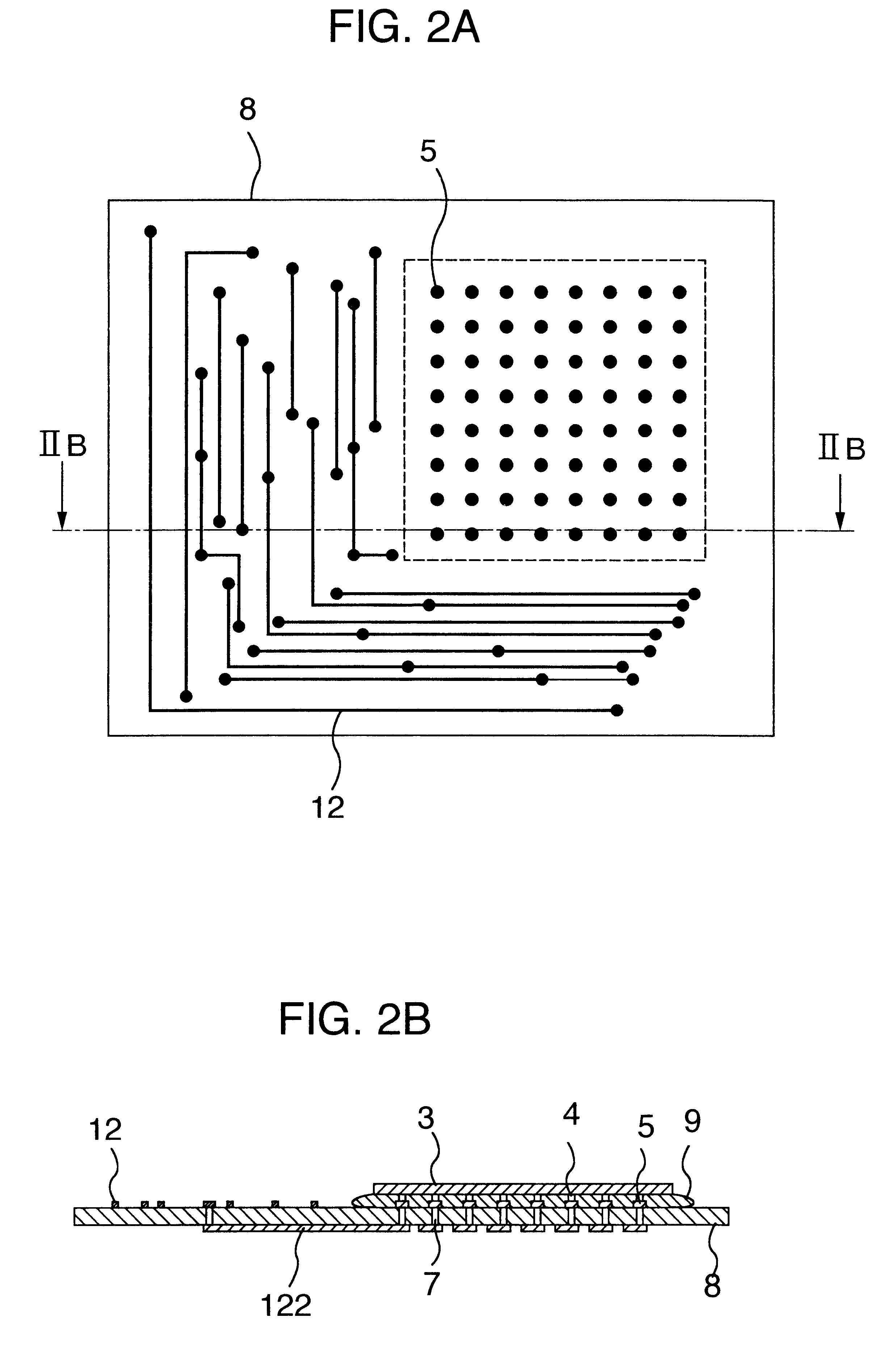Substrate for mounting semiconductor chips
a semiconductor chip and substrate technology, applied in the direction of electrical apparatus construction details, non-metallic protective coating applications, printed circuit non-printed electric components association, etc., can solve the problems of size and weight, no end to the progress of electronic devices, etc., and achieve the effect of improving connection reliability and high mass productivity
- Summary
- Abstract
- Description
- Claims
- Application Information
AI Technical Summary
Benefits of technology
Problems solved by technology
Method used
Image
Examples
example 1
A 0.8 mm thick both-sided copper-clad laminate MCL-E-67 (trade name, produced by Hitachi Chemical Company, Ltd.) having an 18 .mu.m copper foil on both sides thereof, serving as a support in a substrate, was perforated to form the holes that were to become through-holes 7 in FIG. 5B, and immersed in an electroless copper plating solution L-59 (trade name, produced by Hitachi Chemical Company, Ltd.) at 70.degree. C. for 8 hours, causing deposition of 15 .mu.m plating copper. Then unnecessary copper was selectively etched away to form wiring conductors 122, and the through-holes 7 were filled with a resin. The resin used for filling the through-holes 7 was prepared in the following way.
To a 1-liter separable flask equipped with a cocked 25 ml determinate water receiver connected to a reflux condenser, a thermometer and a stirrer, 123.2 g (0.3 mol) of 2,2-bis-[4-(4-aminophenoxy)phenyl]propane, 115.3 g (0.6 mol) of trimellitic anhydride, both as diamines having 3 or more aromatic rings,...
example 2
A semiconductor chip mounting substrate 8 was made in the same way as in Example 1, with the opening 21 of the solder resist 61 being formed smaller than the contour 101 of the semiconductor chip 3.
The ends of the gold wires were melted by a torch or other means to form gold balls, these balls were pressed against an electrode pad, and then the wires were cut out to provide the bumps 4 at the terminal electrodes of the semiconductor chip 3 as shown in FIG. 6B. Further, an anisotropic conductive adhesive Flip Tac (trade name, produced by Hitachi Chemical Company, Ltd.) 91 was disposed between the semiconductor chip mounting substrate 8 and a semiconductor chip 3, and said semiconductor chip 3 was mounted with the upside down on the substrate 8 in registration with the connecting terminals 5 on the substrate and heated and pressed from above under the conditions of 180.degree. C., 30 g / bump and 20 seconds to electrically connect the bumps of the semiconductor chip 3 and the correspond...
example 3
A semiconductor chip mounting substrate 8 was made in the same way as in Example 1, but as shown in FIG. 7A, the wiring conductors 12 on the substrate surface were not formed beneath the contour 1 of the chip, and the opening 21 of the solder resist 61 was formed 100 .mu.m greater than the contour 1 of the semiconductor chip 3.
As shown in FIG. 7B, bumps 4 were formed by plating on the terminal electrodes of the semiconductor chip 3, and further an anisotropic conductive adhesive Flip Tac (trade name, produced by Hitachi Chemical Company, Ltd.) 91 was disposed between the semiconductor chip mounting substrate 8 and a semiconductor chip 3. Said semiconductor chip 3 was mounted with the upside down on the substrate 8 in registration with the connecting terminals on the substrate and heated and pressed from above under the conditions of 180.degree. C., 30 g / bump and 20 seconds to electrically connect the bumps 4 of the semiconductor chip 3 and the semiconductor chip mounting substrate 8...
PUM
 Login to View More
Login to View More Abstract
Description
Claims
Application Information
 Login to View More
Login to View More - R&D
- Intellectual Property
- Life Sciences
- Materials
- Tech Scout
- Unparalleled Data Quality
- Higher Quality Content
- 60% Fewer Hallucinations
Browse by: Latest US Patents, China's latest patents, Technical Efficacy Thesaurus, Application Domain, Technology Topic, Popular Technical Reports.
© 2025 PatSnap. All rights reserved.Legal|Privacy policy|Modern Slavery Act Transparency Statement|Sitemap|About US| Contact US: help@patsnap.com



